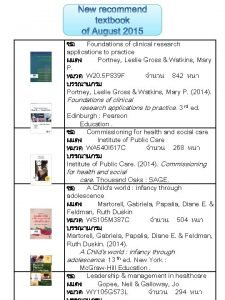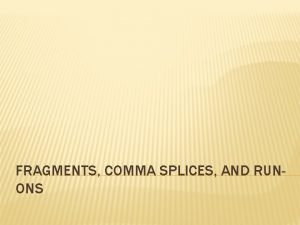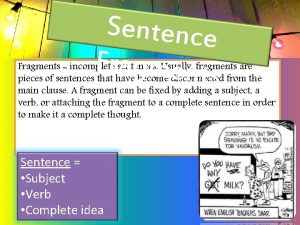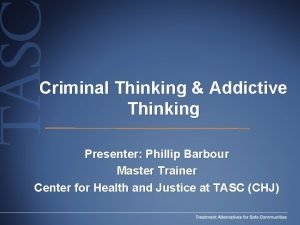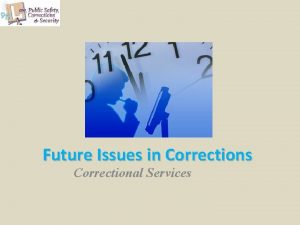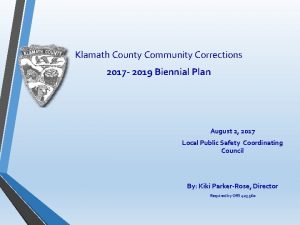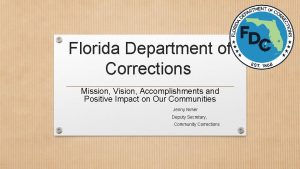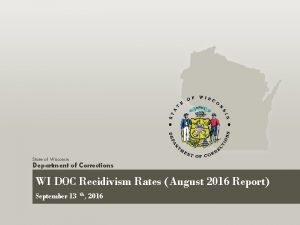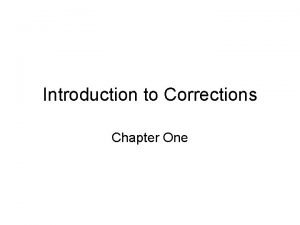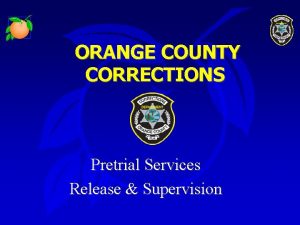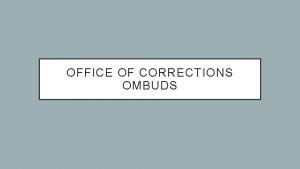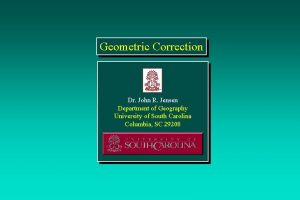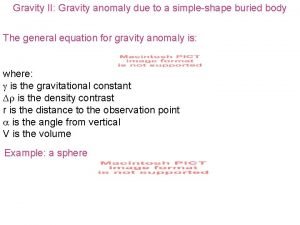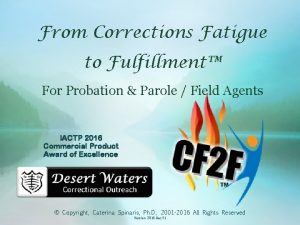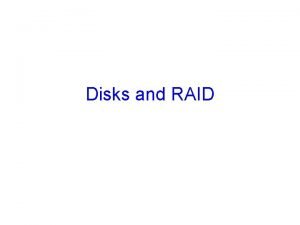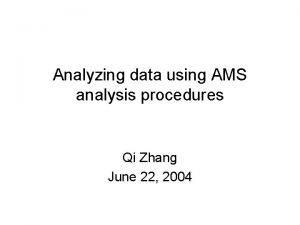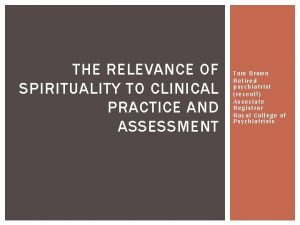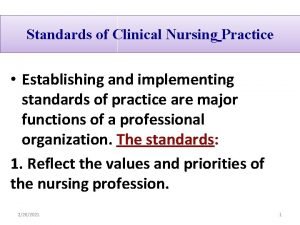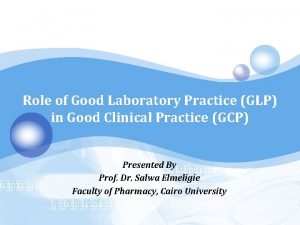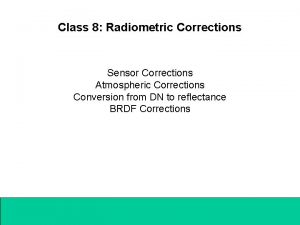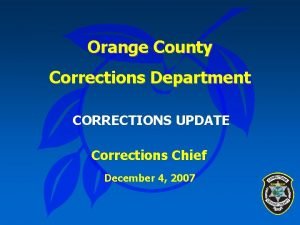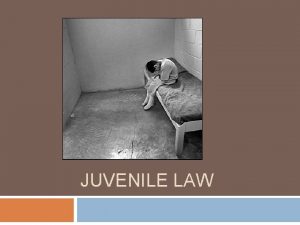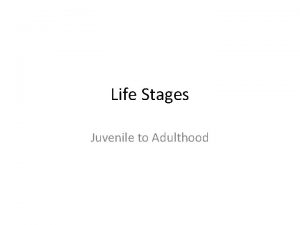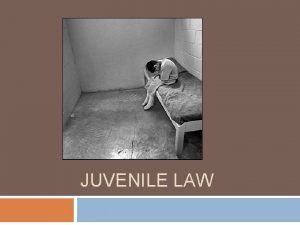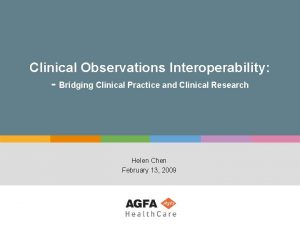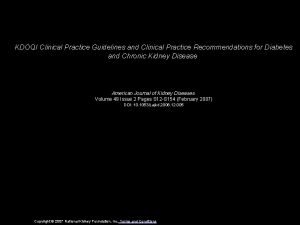F14 RESEARCH AND CLINICAL PRACTICE IN JUVENILE CORRECTIONS





























- Slides: 29

F-14 RESEARCH AND CLINICAL PRACTICE IN JUVENILE CORRECTIONS Embedding Research in a Large Scale Treatment Program Barry Burkhart, Ph. D. , ABPP - Auburn University Patrick Cook, M. S. - Auburn University Ray Sumrall, Ph. D. - University of Alabama

History • 1999 – Alabama State legislature mandated all juvenile sex offenders be treated. • Department of Youth Services (DYS) ill-equipped to respond to mandate. • Consortium between Auburn University Department of Psychology and University of Alabama Department of Social Work responded. Public-Public partnership founded.

History, continued • Best Practices Model –Required DYS to strive for excellence –Constant program evaluation and review • Empirical Foundation – Student Assessment (e. g. . , pre-treatment, posttreatment) -Program Assessment (e. g. , staff interventions, treatment components)

State of Alabama - Department of Youth Services Mt. Meigs Correctional Facility

Accountability Based Sexual Offender Program (ABSOP) Mt. Meigs Correctional Facility

Assessment Fundamentals 3 Fundamental Goals: • Rich and accurate clinical assessment to facilitate and focus treatment services • Serves as the foundation of a sound empirical database from which theoretical and practical assumptions can be measured • Allow for accurate and conceptually articulated assessment of outcomes

Comprehensive Assessment Protocol Pre-treatment Assessment Battery -Extensive multi-dimensional Clinical Interview (e. g. , adjudicating offense information, history of trauma/abuse/neglect, medical history, family, school/peers) -Intellectual Assessment -Achievement Assessment -Current/Past Psychopathology -Personality Assessment/Psychopathy -Actuarial Risk of Re-offense

Comprehensive Assessment Protocol, continued Post-Treatment Assessment Battery -Post Treatment Interview/Oral Examination -Actuarial Risk of Re-offending -Intelligence Assessment -Achievement Assessment -Personality Testing -Psychopathology -Therapist/Case Manager Ratings -Performance in Individual/Group Treatment -Overall Rating of “Success”

Offender Demographics - 772 Offenders (586 JSOs, 184 NJSOs) since 2000 - Avg. Age = 16. 01 Years (SD = 1. 53 Years); Avg. Grade = 8. 67 Grade (SD = 1. 99 Grade) - Racial composition: Caucasian (50. 7%), African American (46. 0%), Bi-racial (1. 7%), Hispanic (1. 0%), and “Other” (0. 6%) - Most frequent JSO charges: Sexual Abuse, 1 st Degree (30%), Sodomy, 1 st Degree (17. 6%), Rape, 1 st Degree (14%) and Sexual Misconduct (11. 3%) - Most frequent NJSO: Theft of Property (18. 3%), Burglary (13. 9%), and drug offenses (13. 8%).

Database Data has informed treatment and program decisions • Comparisons JSO vs. NJSO • Offender Types (cluster analysis) • Outcome Measures (Pre-Treatment/Posttreatment)

Comparisons JSO vs. NJSO • Are Juvenile sex offenders “different” compared to delinquent, non-sex offending peers? • Treatment/Program implications • Examined 716 offenders (N=554 JSOs, 162 NJSOs) • Personality, IQ, Achievement, psychopathy , psychopathology

JSO vs. NJSO Comparisons • The Millon Adolescent Clinical Inventory (MACI) Self-report inventory specifically designed to measure unique psychosocial concerns, personality styles, and clinical symptoms via a true-false format. • The Kiddie-Sads-Present and Lifetime Version (K-SADS-PL) A semi-structured interview protocol is designed to assess 82 current and past symptoms related to 20 different diagnostic areas found within the DSM-IV. • Hare Psychopathy Checklist: Youth Version (PCL: YV) Consists of a semi-structured interview and review of collateral information to measure interpersonal, affective, and behavioral features of psychopathy. • The Wechsler Adult Intelligence Scale (WASI) Uses the vocabulary, similarities, block design and matrix reasoning subtests similar to those of the WAIS to provide an estimate of full scale IQ. • The Wide Range Achievement Test-3 rd edition (WRAT-3) A brief achievement test measuring reading recognition, spelling, and arithmetic computation







Juvenile Sex Offender Clusters • Juvenile sexual offenders – heterogeneous • Victim selection (e. g. , peer-age, childmolester, mixed pattern) incomplete in providing useful treatment information • Empirically derived heterogeneous groups formed based on personality traits • Treatment/program implications

Clusters, contd. 440 Juvenile Sexual Offenders Five cluster solution based on MACI scores - Broadly Disturbed(N=42; 9. 5%) - Anxious/Submissive/Passive (N=171; 38. 9%) - Dysthymic/Shame/Negative Self-Image (N=94; 21. 4%) - Narcissistic Delinquent (N=83; 18. 8%) - Distressed Delinquent (N=50; 11. 4%)


Outcome Measures • Is treatment effective? • Comparison of Pre-treatment and Posttreatment measures • Personality Functioning • Actuarial Measure of Re-offending • Psychopathology




Iatrogenic Effects



Conclusion • Base line data critical/essential • Empirical evaluation of effectiveness • Need to be able/open to make changes informed, in part, by data.
 Translating research findings to clinical nursing practice
Translating research findings to clinical nursing practice Foundations of clinical research applications to practice
Foundations of clinical research applications to practice Define corrections in criminal justice
Define corrections in criminal justice Comma splice examples and corrections
Comma splice examples and corrections Which of the following is a sentence fragment marina
Which of the following is a sentence fragment marina Criminal thinking tactics
Criminal thinking tactics Law, public safety, corrections and security answer key
Law, public safety, corrections and security answer key Accounting changes and error corrections
Accounting changes and error corrections Current and future issues in corrections
Current and future issues in corrections Larch corrections center
Larch corrections center Klamath county community corrections
Klamath county community corrections Florida department of corrections mission statement
Florida department of corrections mission statement Department of corrections wi
Department of corrections wi Intro to corrections
Intro to corrections Orange county community corrections
Orange county community corrections Office of corrections ombuds
Office of corrections ombuds Geometric errors in remote sensing
Geometric errors in remote sensing Gravity method
Gravity method Bouguer
Bouguer Corrections fatigue
Corrections fatigue Debye huckel limiting law
Debye huckel limiting law Essay corrections
Essay corrections Unraid write corrections to parity
Unraid write corrections to parity Qi corrections
Qi corrections Transforming teacher education through clinical practice
Transforming teacher education through clinical practice Spirituality in clinical practice
Spirituality in clinical practice Standards of clinical nursing practice
Standards of clinical nursing practice Gerd clinical practice guidelines
Gerd clinical practice guidelines Logo glp
Logo glp Kdigo 2012 clinical practice guideline
Kdigo 2012 clinical practice guideline

